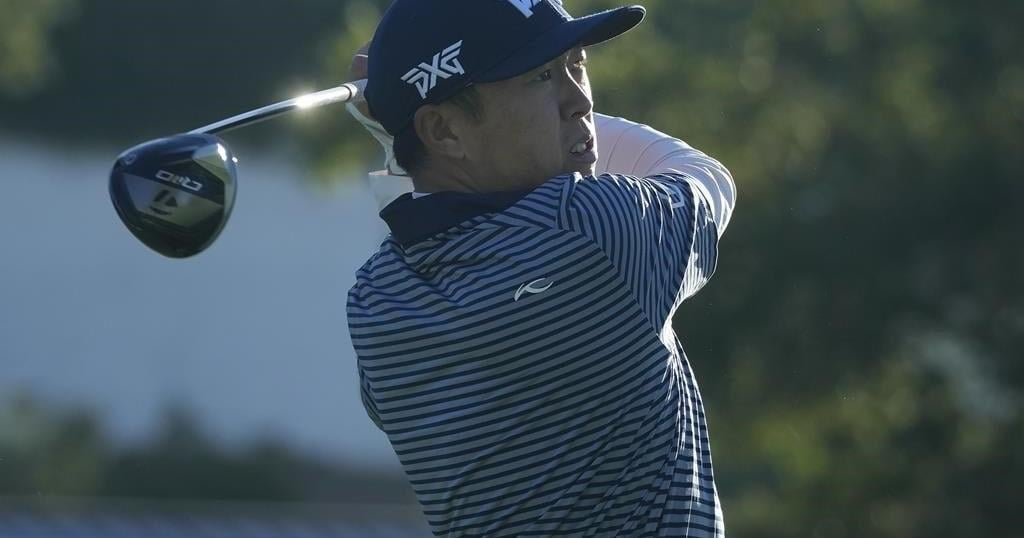NAPA, Calif. (AP) — David Lipsky shot a 7-under 65 on Thursday at Silverado Country Club to take a one-stroke lead after the first round of the Procore Championship.
Winless in 104 events since joining the PGA Tour in 2022, Lipsky went out with the early groups and had eight birdies with one bogey to kick off the FedEx Cup Fall series at the picturesque course in the heart of Napa Valley wine country.
After missing the cut in his three previous tournaments, Lipsky flew from Las Vegas to Arizona to reunite with his college coach at Northwestern to get his focus back. He also spent time playing with some of the Northwestern players, which helped him relax.
“Just being around those guys and seeing how carefree they are, not knowing what’s coming for them yet, it’s sort of nice to see that,” Lipsky said. “I was almost energized by their youthfulness.”
Patton Kizzire and Mark Hubbard were a stroke back. Kizzire started on the back nine and made a late run with three consecutive birdies to move into a tie for first. A bogey on No. 8 dropped him back.
“There was a lot of good stuff out there today,” Kizzire said. “I stayed patient and just went through my routines and played well, one shot at a time. I’ve really bee working hard on my mental game and I think that allowed me to rinse and repeat and reset and keep playing.”
Mark Hubbard was at 67. He had nine birdies but fell off the pace with a bogey and triple bogey on back-to-back holes.
Kevin Dougherty also was in the group at 67. He had two eagles and ended his afternoon by holing out from 41 yards on the 383-yard, par-4 18th.
Defending champion Sahith Theegala had to scramble for much of his round of 69.
Wyndham Clark, who won the U.S. Open in 2023 and the AT&T at Pebble Beach in February, had a 70.
Max Homa shot 71. The two-time tournament champion and a captain’s pick for the President’s Cup in two weeks had two birdies and overcame a bogey on the par-4 first.
Stewart Cink, the 2020 winner, also opened with a 71. He won The Ally Challenge last month for his first PGA Tour Champions title.
Three players from the Presidents Cup International team had mix results. Min Woo Lee shot 68, Mackenzie Hughes of Dundas, Ont., 69 and Corey Conners of Listowel, Ont., 73. International team captain Mike Weir of Brights Grove, Ont., also had a 69.
Ben Silverman of Thornhill, Ont., had a 68, Nick Taylor of Abbotsford, B.C., and Roger Sloan of Merritt, B.C., shot 70 and Adam Svensson of Surrey, B.C., had a 71.
Lipsky was a little shaky off the tee for much of the afternoon but made up for it with steady iron play that left him in great shape on the greens. He had one-putts on 11 holes and was in position for a bigger day but left five putts short.
Lipsky’s only real problem came on the par-4 ninth when his approach sailed into a bunker just shy of the green. He bounced back nicely with five birdies on his back nine. After missing a 19-foot putt for birdie on No. 17, Lipsky ended his day with a 12-foot par putt.
That was a big change from last year when Lipsky tied for 30th at Silverado when he drove the ball well but had uneven success on the greens.
“Sometimes you have to realize golf can be fun, and I think I sort of forgot that along the way as I’m grinding it out,” Lipsky said. “You’ve got to put things in perspective, take a step back. Sort of did that and it seems like it’s working out.”
Laird stayed close after beginning his day with a bogey on the par-4 10th. The Scot got out of the sand nicely but pushed his par putt past the hole.
Homa continued to have issues off the tee and missed birdie putts on his final four holes.
___
AP golf:


























